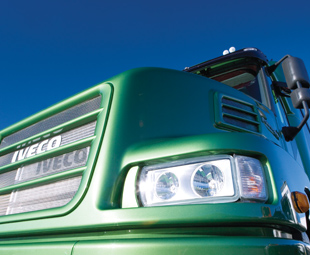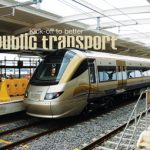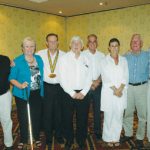Global strategies

With the 21st century’s opening decade almost behind us, the time seems right to evaluate developments in commercial vehicle alliances that have sprung up globally in recent times.
Surprisingly, this phenomenon of alliances dates back to 1981, when Daimler Benz (now Daimler Trucks) acquired US manufacturer Freightliner. In 1997, the German manufacturing giant absorbed Ford Louisville (renamed Sterling, and subsequently run out); quickly followed by Thomas Built Buses (1998), Western Star and Detroit Diesel (2000), and Mitsubishi Fuso Truck and Bus over a period of five years (2001-2005). The origins of conglomerate Paccar go back even earlier to 1972, when it was already in control of US-based brands Kenworth and Peterbilt. Expansion overseas started in 1981 with the acquisition of Foden in the United Kingdom (since closed); followed in 1996 by the absorption of the much larger DAF organisation in Holland, together with its significant production presence at the United Kingdom’s (UK) historic Leyland site. The third grouping, headed up by Volvo AB, was established in 2000 to manage the global trucking interests of the Renault-Nissan alliance. These include Renault Trucks, Mack and UD Trucks (née Nissan Diesel), and linkages with Samsung in Korea, Eicher in India and DongFeng in China.
More recently, we have seen the beginnings of a hugely significant grouping within the Volkswagen family, with the potential to draw MAN, Scania and Volkswagen’s Brazilian truck and bus interests together, along with some important well-established linkages in India and China. According to statistics published by the Organisation Internationale des Constructeurs d’Automobiles (OICA) for 2008, these four alliances combined produce around 40% of the world’s trucks and buses of 5 t gross vehicle mass (GVM) and larger.
Of the four, to date it is Daimler Trucks that has pursued the most overtly aggressive strategy for global product rationalisation. Having bought into the North American truck manufacturing industry to access its huge domestic market – nearly half a million medium commercial vehicle (MCV)-, heavy commercial vehicle (HCV)- and extra-heavy commercial vehicle (XHCV)-equivalent units when the market was buoyant – Daimler soon realised that there would be little benefit to its global position if it just carried on selling US operators their preferred mixture of bought-in engines, gearboxes and axles. Accordingly, Daimler has since worked hard to gain market acceptance for its own in-house components, starting with diesel engines. After initially offering Mercedes’ 12.8 l MBE 4000 and
7.2 l MBE 900 power units (with Detroit Diesel branding) as options on Freightliner, Sterling and Western Star trucks, Daimler Trucks has now introduced the Detroit Diesel DD13, DD15 and DD16 versions of its HDEP global engine family; also selected as power-house of choice for the group’s European-, South American- and Asian-manufactured products. Rest assured: the full might of Daimler’s promotional arsenal will be used to establish these as the preferred engine for all its North American products.
Paccar’s traditional positioning as an American group – with its product profile firmly rooted in the “kit truck” philosophy – has made this group’s route to global rationalisation slightly more challenging. However, it has now bitten the bullet: so 2010 will see far more aggressive promotion of its DAF-designed MX (12.9 l) and PX (9.2 l) diesel engines in North America; together with the imminent opening of Paccar’s first engine production plant on that continent, where the MX power unit will be built.
Turning to the Volkswagen-led alliance, it is still very early days. Nothing significant has emerged to hint at future strategic developments, other than that leadership within the group has been conferred on MAN. The history between MAN and Scania, including a failed attempted takeover of the latter by the former, has been turbulent. Consequently, it will take considerable corporate diplomacy to cement a happy and cohesive new family. Fortunately, there is significant potential for “off-the-radar” cooperation in manufacturing truck components as well as in support-related activities; which is where the desired economies of scale may be lurking, at least in the beginning.
The Volvo family has set a good example of how to pursue such a strategy. Until now, there has been very little visible connection between Volvo, Mack, Renault and UD products. While Volvo, Mack, and Renault have implemented some base engine rationalisation, this has been largely concealed by cleverly differentiated labelling. However, last year’s announcement that the group is to introduce a “medium-heavy” global engine family – presumably to replace Volvo’s 11 l D11C, and 13 l D13A power units, Mack’s MP7 and MP8 engines, Renault’s DXi 11 and DXi 13, and UD Trucks’ GE 13 – is the first sign that Volvo is now moving towards a more transparent rationalisation strategy. Although some of these engines already share basic components, one very obvious exception is the stand-alone UD power unit. It is, therefore, highly significant that a 4×2 Quon truck-tractor, drawing a lightweight B-double combination, was recently observed on test in Australia by the local specialist media. The vehicle concerned was fitted with what was identified as a Volvo engine. Also noted were a combination of selective catalytic reduction (SCR) and exhaust gas recirculation (EGR) emission controls, together with a Volvo I-Shift 12-speed transmission.
 Australia will be stepping up its level of compulsory emissions compliance to the new ADR 80/03 standard on 1 January 2011, so any new products introduced after that date will have to meet the equivalent of Euro 5 or US EPA 2007 limits. The timing of this landmark legislation provides a logical time frame for new model introductions. However, with just a little more than six months left before ADR 80/03 implementation, testing should already be well under way for any new products planned for 2011; adding credence to that Australian reporter’s observation. Characteristically, the UD test unit was seen to be carrying specific “GH11” branding on the engine, suggesting that it is a new in-house design following on from the GE13 currently used in Quon models. Nevertheless, the reporter drew his own conclusions from familiar Volvo-esque sounds, appearance and design features, together with expectations created by the “global engine family” announcement. If he got it right, this vehicle represents the first tangible evidence of UD’s anticipated closer integration into the Volvo family.
Australia will be stepping up its level of compulsory emissions compliance to the new ADR 80/03 standard on 1 January 2011, so any new products introduced after that date will have to meet the equivalent of Euro 5 or US EPA 2007 limits. The timing of this landmark legislation provides a logical time frame for new model introductions. However, with just a little more than six months left before ADR 80/03 implementation, testing should already be well under way for any new products planned for 2011; adding credence to that Australian reporter’s observation. Characteristically, the UD test unit was seen to be carrying specific “GH11” branding on the engine, suggesting that it is a new in-house design following on from the GE13 currently used in Quon models. Nevertheless, the reporter drew his own conclusions from familiar Volvo-esque sounds, appearance and design features, together with expectations created by the “global engine family” announcement. If he got it right, this vehicle represents the first tangible evidence of UD’s anticipated closer integration into the Volvo family.
It was subsequently reported that Volvo management had confirmed that UD-branded trucks will be equipped with common engines when new Japanese emission legislation is implemented later in 2010. Volvo has also announced that it is to internalise production of its Euro 6-compliant “medium duty” truck diesel engines from 2013. Currently, the equivalent engines are manufactured by Deutz AG in Germany for installation in Volvo and Renault trucks. The next generation of 5 to 8 l engines is to be assembled at the Renault Trucks factory located at Lyon-Venissieux in France, alongside 9 and 11 l heavy-duty power units. Although not overtly stated in the announcement, it is expected that these engines will form part of Volvo’s global engine programme and that related power units will be adopted by other companies in the family such as UD Trucks in Japan. At present, UD Trucks uses bought-in equivalent-size 4 and 6-cylinder Hino engines in some mid-range domestic and export models.
The parting of ways, and related developments
Since 1992, in addition to its own range of products, Iveco Trucks Australia (ITA) has been responsible for the marketing and support of certain Navistar International trucks in the land down-under. This arrangement followed the acquisition, by ITA’s Fiat-owned parent, of International Harvester Company’s Dandenong factory from the reconstituted Navistar International Corporation; thus ending more than eight decades of direct involvement by the North American manufacturer in the Australian truck business. From 1952, when the plant was first opened, unique families of locally-manufactured, indigenous international models named Australian Model C Cab Over (ACCO) S-Line and T-Line were developed to combine US-style truck engineering with Australian operators’ configuration preferences. These were built in their thousands for the domestic market and some export markets, including South Africa. At the time of writing, the highly successful ACCO Series lives on, mainly used for multi-axled refuse compactor and truck mixer applications; but these basic no-nonsense trucks have carried Iveco badging on their front panels since 2002.
After initially selling only imported, fully-built-up units sourced from overseas international plants, in 2003 ITA recommenced assembling the American truck brand in Australia; starting with the 9200 and 9900 Series. The 7600 Series followed in 2007. However, there has been a widely-held perception that ITA has, understandably, been less than aggressive in marketing its trucks internationally, lest they disadvantage its own European and locally-sourced product line-up. This must have been an area of great frustration for Navistar. Australian operators are renowned for favouring American-style trucks at the top end of the payload spectrum. Also, compatriot Paccar’s Kenworth products have already achieved market dominance down-under. However, for Navistar International to compete with the likes of Kenworth’s cab-over (forward control) K108 market leader in the premium tractor category, their products call for adaptations and, possibly, even all-new designs.
The recent establishment of the NC2 Global LLC joint venture by Navistar International and Caterpillar – and its nomination of Australia as a target market for business expansion – tend to point towards an early re-examination of Navistar International’s distribution strategy in that country. With this in mind, it comes as no surprise to learn that Navistar will formally dissolve its current supply, technical, assistance and licence agreement with ITA on 9 October 2010. After that date, Navistar will assume responsibility for the launch of new products from the NC2 range into the Australian market. However, to ensure continuity, ITA will still provide authorised parts, service and support for Navistar trucks for a further seven-year period. In addition, ITA will be authorised to sell off its own inventory of ADR 80/02-compliant International stock. The completion of this process is expected to take until mid-2011. It has since been announced that NC2 is to establish a truck assembly facility at an existing Caterpillar manufacturing site located in Tullamarine, Victoria.
As previously reported in FOCUS, NC2 is a 50/50 joint venture between Navistar International and Caterpillar. It is establishing a partnership in China with Jianghuai Automobile Company (JAC), and with Mahindra International in India; and intends manufacturing and selling on-highway trucks in Brazil, China, Russia, South Africa and Turkey, as well as Australia. While not a great deal of detail regarding product or distribution strategies emerged until quite recently, the corner of the product veil was lifted enticingly at Melbourne’s inaugural International Truck, Trailer and Equipment Show held during March. This revealed that the first-ever Cat-branded on-road conventional, bonneted truck-tractors are to be launched later this year: the CT 610 with 470 hp (350 kW) Cat C13 engine, and the 550 hp (410 kW) Cat C15-powered CT 630. Gross Combination Mass (GCM) ratings will range from 57 to 90 t. The widely-held expectation that Cat would bring to the table its extensive distribution and dealer network – created and developed to support its world-renowned earthmoving equipment – proved well-founded. In markets such as Australia, this prospect is even more attractive given Caterpillar’s recent history as a successful proprietary diesel engine supplier to the road transport industry. Together, this development and the NC2 strategy to sell trucks with both Navistar International and Cat branding provide the market with an almost-perfect fit.
Meanwhile Iveco, facing the loss of the Navistar component of its business, must plan for its future in Australia. Importantly, it will continue to own the ACCO product range, thus retaining a very substantial chunk of business volume while attempting to attract increased market support for its more Eurocentric products. With the disappearance of the American connection, Iveco’s locally-engineered PowerStar conventional, bonneted tractor will assume greater significance. First introduced in 1998 in radical and bizarrely over-styled “Darth Vader” format, the PowerStar has matured: thanks to a stylish 2006 re-design, with the most recent version of the cab adapted from the forward-control Stralis structure and combined with a locally-engineered bonnet/front wing assembly. Since 2006, this model has only used Iveco’s own 10 and 13 l Cursor power units, with available outputs up to 560 hp (418 kW). However, its reported failure to win a substantial share of the available market apparently set Iveco to rethinking driveline options. In earlier times, a Cummins 15 l option had been included in the specification; and in 2003, with this option in play, PowerStar sales climbed to 346 units. By comparison, 2008 PowerStar sales reportedly totalled only 68 units.
At the 2009 Brisbane Truck Show, Iveco exhibited its PowerStar ISX derivative. This offers the option of Cummins 15 l power units with outputs of 485, 525 and 550 hp (360, 390 and 410 kW), alongside the 450, 500 and 560 hp (335, 373, and 418 kW) Iveco Cursor 13-powered versions. Interestingly, the PowerStar mates the Cummins ISX ECR-equipped engine with Iveco’s Eurotronic II automated transmission as standard equipment. The series is available in three cab/roof height combinations, also offering Hendrickson Primaax air rear suspension, three optional final drive ratios, and a GCM rating of 90 t; making it suitable for B-double and some road-train applications.
Global FOCUS is a monthly update of international news relating to the commercial vehicle industry. It is compiled exclusively for FOCUS by Frank Beeton of Econometrix.
Published by
Focus on Transport
focusmagsa




